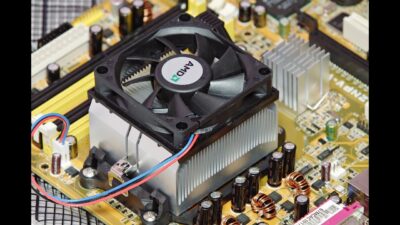There are a few reasons why your PC fans might not be working:
 Dust buildup: Dust can clog up the fans and vents in your computer, preventing airflow and causing the fans to not spin properly.
Dust buildup: Dust can clog up the fans and vents in your computer, preventing airflow and causing the fans to not spin properly.
Faulty fan: The fan itself may be faulty and not spinning properly.
Loose connection: The fan may not be properly connected to the motherboard or power supply.
BIOS settings: The BIOS settings may be configured to turn off the fans under certain conditions.
Software issue: A software issue may be preventing the fans from spinning properly.
Here are some things you can do to troubleshoot a PC fan that is not working:
Check for dust buildup. Open up your computer case and check the fans and vents for dust. If there is a lot of dust, use a can of compressed air to blow it out.
Check the fan connection. Make sure the fan is properly connected to the motherboard or power supply. If the connection is loose, tighten it.
Check the BIOS settings. Make sure the BIOS settings are not configured to turn off the fans under certain conditions.
Run a diagnostic tool. There are a number of software programs that can be used to diagnose PC problems. These programs can often identify the problem with a non-functioning fan.
Replace the fan. If all else fails, you may need to replace the fan.
If you have tried all of these things and your PC fan is still not working, you may need to take it to a professional for further diagnosis and repair.
Here are some additional tips to help keep your PC fans working properly:
Clean your computer regularly to remove dust buildup.
Make sure the fans are properly connected to the motherboard or power supply.
Check the BIOS settings to make sure they are not configured to turn off the fans under certain conditions.
Use a software program to diagnose PC problems if you are having trouble identifying the source of the problem.
Replace the fan if it is faulty.
By following these tips, you can help to keep your PC fans working properly and prevent them from malfunctioning.
